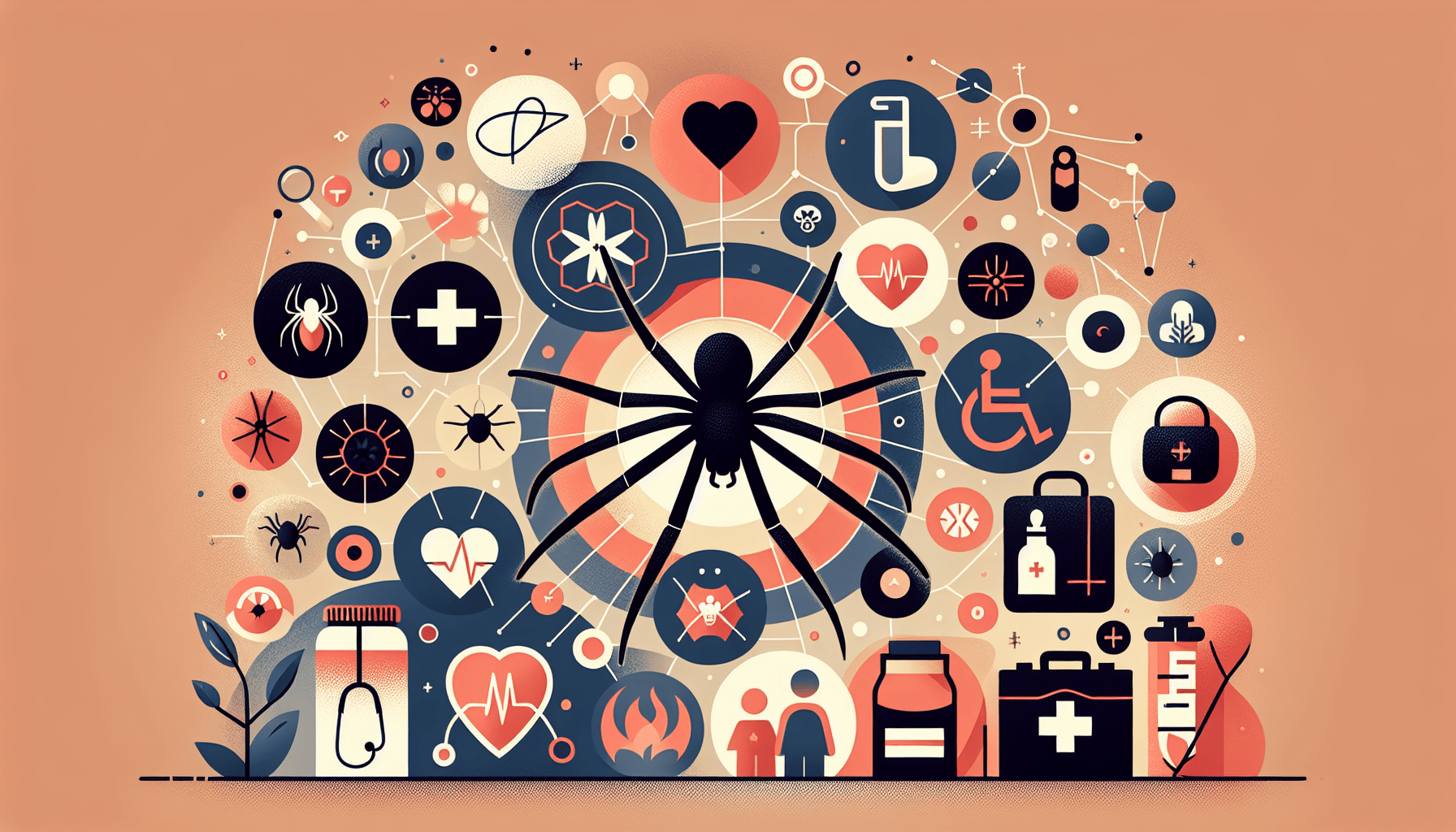Tirzepatide for Sleep Apnea - Can It Help?
Understanding Sleep Apnea and Its ChallengesSleep apnea is a common yet serious sleep disorder characterized by repeated interruptions in breathing during sleep. These pauses [...]
Read More
Medically reviewed by Abhijit Bhattacharyya | MD, PhD, MBA, Tufts University School of Medicine - Miami, Florida on February 15th, 2024.
Black widow spiders are venomous arachnids found in the United States. While their bites can be dangerous, especially to young children and older adults, most people who are bitten recover without serious complications. Knowing how to identify black widows, recognize the symptoms of a bite, and seek proper treatment can help you stay safe and healthy.
Black widow spiders are medium-sized, about half an inch long. In the U.S., there are two common species:
Southern black widow: Shiny, black, globe-shaped abdomen with a red hourglass mark on the underside
Northern black widow: Row of red spots down the middle of the upper surface of the abdomen, with two crosswise bars on the underside; markings can also be yellow or white
These spiders are active at night and prefer dark corners or crevices, such as garages. They only bite when disturbed.

Black widow spider venom affects the nervous system. Some people may experience mild symptoms, while others may have a serious reaction. Common symptoms include:
Pain, burning, swelling, and redness at the bite site
Two visible fang marks
Muscle pain and stiffness, usually within 8 hours
Nausea or vomiting
Difficulty breathing
Severe abdominal pain or cramping
Heavy sweating
Rash and itching
Swollen eyelids
Weakness or shaking
Inability to move legs
If you experience serious symptoms, seek medical help immediately. Black widow bites can be fatal in young children and older adults.
If you suspect a black widow bite, contact your doctor or a poison control center right away. In the meantime, you can take the following steps to ease symptoms and prevent infection:
Wash the area with soap and water
Apply a cold compress or ice pack wrapped in cloth to the area
Take an over-the-counter pain reliever like acetaminophen
Elevate the affected limb to reduce swelling
Apply an antibiotic cream or lotion to the bite
If possible, capture the spider in a plastic bag or jar for identification
Your doctor will assess your symptoms and determine the appropriate treatment. In severe cases, you may require muscle relaxants, stronger pain medication, or even antivenin, a drug made from substances in horse blood that neutralizes the venom. Antivenin can cause side effects and requires close monitoring for 8-12 days after administration.
To reduce your risk of black widow bites:
Keep storage areas clean and clutter-free
Avoid woodpiles, fallen tree branches, and other potential hiding spots outdoors
Be cautious when moving items that have been undisturbed for a long time
Wear gloves and protective clothing when working in areas where black widows may be present
By understanding how to identify black widow spiders, recognize bite symptoms, and take appropriate action, you can protect yourself and your loved ones from the potential dangers of these venomous arachnids.
For more information on black widow spiders and their bites, visit:
Understanding Sleep Apnea and Its ChallengesSleep apnea is a common yet serious sleep disorder characterized by repeated interruptions in breathing during sleep. These pauses [...]
Read MoreHeart attacks are often perceived as a predominantly male health issue, but the reality is that heart disease is the leading cause of death for women worldwide. Recognizing [...]
Read MoreTelehealth has transformed the way patients access healthcare, offering convenience, speed, and accessibility that traditional in-person visits often cannot match. With the [...]
Read More